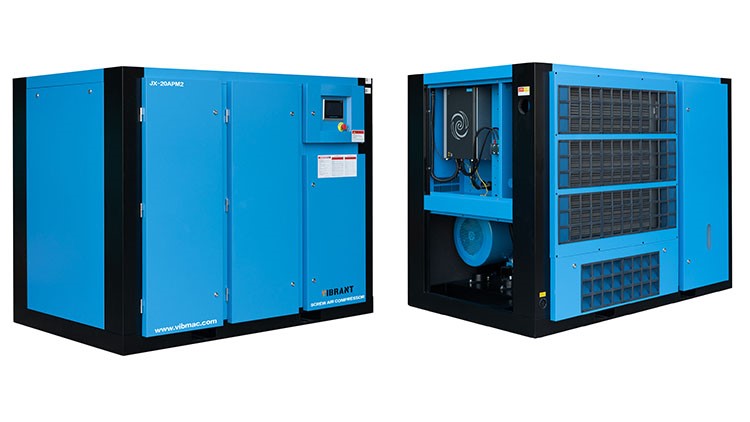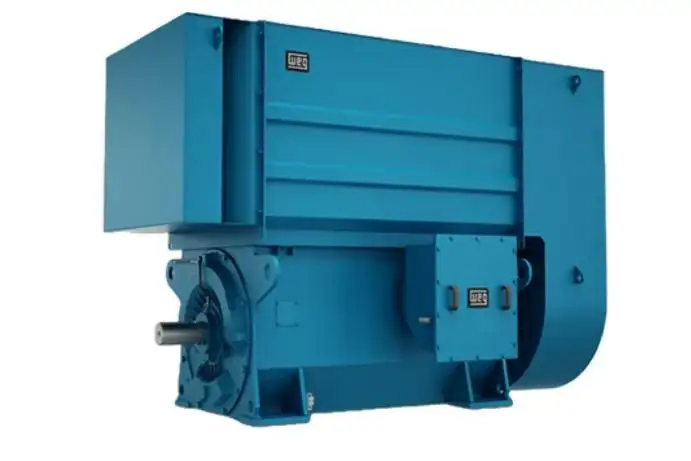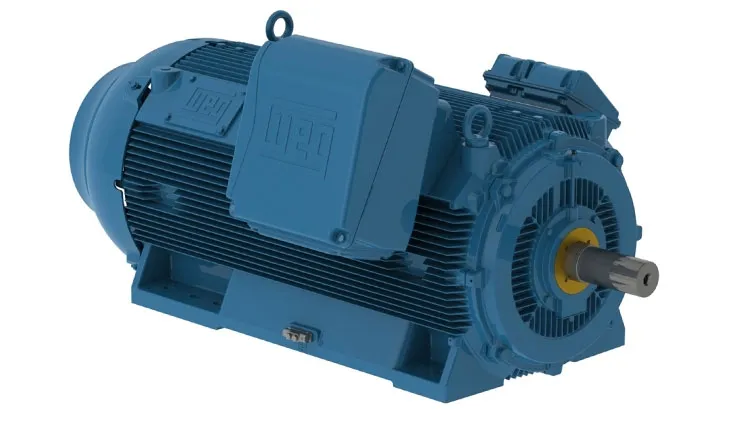What is a Compressor Stage?
2 Stage Air Compressor VS Single Stage: How to Choose? We jump into the single-stage-versus-two-stage-compressor talk, let's first pin down what a stage means in the world of air compression. A stage is simply one step in the process where the air is squeezed to a higher pressure than it was before. Most of the time, people are talking about compressors, and they are picturing a reciprocating machine. In that setup, air gets pulled into a cylinder and pushed down by a piston.
Single Stage Compression: Air enters one cylinder, gets pushed to the final pressure in one quick stroke, and then slides right into the storage tank. It’s a one-and-done move, almost like a single hard shove.
Two-Stage Compression: The air first enters a larger cylinder, compressed to a middle pressure, then cools off in an intercooler- fancy name, but all it does is drop the heat. After that chill, the cooler air goes into a smaller second cylinder, where a final stroke squeezes it to the top pressure, and off to the tank it goes. Think of it as a double push-push that lets the whole system run cooler and use power more smartly.
Because each design works slightly differently, how long it runs, how hot it gets, and what jobs it can handle can change in a flash. So the stage choice will steer you toward the right compressor for your garage or factory.
Comparison of 2-Stage VS Single-Stage:
The Single-Stage Air Compressor
Let’s kick off our compressor look with the single-stage model. It’s a favorite for everyday chores because it stays simple and easy on the wallet.
How the Single-Stage System Works?
In a single-stage unit, a big piston pulls in air, squeezes it all at once, and then shoves it straight into the tank. There is no extra step.
Pressure Range (PSI): Typical single-stage units run between 100 and 125 PSI. That spread covers most small jobs, but check it against your tool list before you buy.
CFM (Cubic Feet per Minute) Output: Their CFM numbers are good for short, steady bursts but drop off when a job needs air non-stop. Grab one when your tools sip instead of chugging.
Heat Generation: Because the final squeeze happens in one stroke, the cylinder gets hot. If you run it for hours, that extra heat might call for more frequent service.
Single-Stage Air Compressor Uses: Where They Shine
Single-stage compressors shine in short, light, and medium jobs that don’t run all day. Their strongest perks are:
Affordability: Up-front prices are usually lower than on bigger, multi-stage machines.
Portability: Many compact models fit in a trunk and can pump up a tire at the park.
Simplicity: With fewer moving parts, routine checks and oil changes take minutes, not hours.
The Two-Stage Air Compressor: The Powerhouse for Demanding Applications
When pressure has to stay high for hours, the two-stage unit steps in. Built for tough work, it keeps parts cool and delivers clean air for larger tools.
The Two-Stage Marvel
Its secret is simple: two compression chambers instead of one. First, a big low-pressure cylinder halves the load. Then, air moves to a smaller high-pressure chamber that raises it to the final bar you need.

Why Two-Stage Air Compressors Rule Work Sites
Intercooling: Inside a two-stage compressor, the intercooler sits right between the first and second stages. This simple metal box cools the already-compressed air before the second stage squeezes it again.
Higher Efficiency: The machine uses much less power overall.
Reduced Heat Generation: Running cooler puts less stress on parts and helps the whole system last longer.
Less Moisture: Chilly air carries less water, so the tank and your tools stay much drier.
Pressure Range (PSI): Most two-stage compressors pump air at 175-200 PSI, and some go even higher for special tasks. That pressure opens the door to heavier tools, nail guns, and paint sprayers that need a lot of grunt.
CFM Output: On top of the pressure, these machines spit out a steady stream of high CFM. That constant volume keeps large, thirsty equipment plugged in and working without pause.
How to Choose an Air Compressor: Your Step-By-Step Guide
So, how do you pick the right compressor for your work? Price matters, yet the real goal is matching machine specs to your daily demands.
1. Know the PSI and CFM of Your Tools Call for
Every air tool runs best at its own PSI (pounds per square inch) and CFM (cubic feet per minute) numbers. Heavy-duty gadgets such as sanders, grinders, or sandblasters suck down far more air than an occasional brad nailer ever will.
• Continuous or Intermittent Use?
If a job demands nonstop running sprayers, die grinders, or constant hammering-you do need a compressor with a big tank and a high-duty cycle.
• Plan Ahead:
Opt for that slightly larger unit now, and it might spare you from spending later when bigger tools come into play.
2. Match the Compressor to Your Work Environment
• DIY/Home Use:
For light at-home projects, a cheap single-stage piston model will do. Small footprint and is easy on the wallet.
• Auto Workshop:
Drivers love a two-stage machine because it pushes both high pressure and plenty of volume-smooth shots for hungry impact wrenches.
• Industrial Operations:
Factories usually reach for rotary screw compressors or beefy two-stage setups built to run almost nonstop.
3. Think Long-Term: Efficiency and Maintenance
• Energy Efficiency:
Yes, the upfront bite stings, yet a quality two-stage unit pays back through lower electric bills.
• Cooling Matters:
Good heat control shrinks wear, chops breakdowns, and stretches out the lifespan of every compressor.
4. Budget Smartly
Keep this rule close: chasing the cheapest model can backfire. A flimsy machine that passes air leaks or overheats soon eats dollars in repairs, downtime, and damaged tools.
5. Keep Noise in Mind
If the compressor lives in your garage or shop, noise matters. Quieter units keep peace at home, so check the dB score before you buy.
Beyond the Stages: Other Key Features
Stage design is vital, but other parts also shape a great composer:
Tank Size: A bigger tank holds air longer, so the motor kicks on less.
Motor Horsepower (HP): HP matters, yet CFM at PSI tells the real story.
Pump Material: Cast-iron pumps usually outlast lighter alternatives.
Conclusion
2 Stage Air Compressor VS Single Stage: How to Choose? Picking between a two-stage or single-stage compressor starts with knowing how you work. For small, on-and-off jobs and tighter budgets, a single-stage model gets the job done without breaking the bank. Yet, when the workload is steady and the pressure needs are high, the two-stage machine's power, efficiency, and longer lifespan earn your trust and money. Picking the right compressor isn’t just another buy; it’s a jump in skill and output. Think it through!









